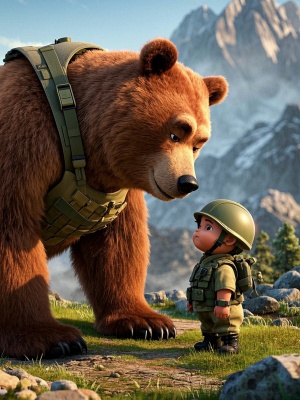The Art of Black and White Drawing Portraits: A Timeless Expression
Introduction: The Power of Monochrome Portraits
Black and white drawing portraits have captivated artists and audiences for centuries. Stripped of color, these monochromatic masterpieces rely on contrast, texture, and composition to convey emotion and personality. Whether created with pencil, charcoal, or digital tools, black and white portraits offer a unique way to capture the essence of a subject.
In this comprehensive guide, we'll explore the techniques, challenges, and solutions in creating stunning black and white portrait drawings. For those interested in transforming photos into artistic portraits, check out our portrait to art conversion guide.
The Fundamentals of Black and White Portrait Drawing
Understanding Value and Contrast
The foundation of any successful black and white portrait lies in mastering value - the range from pure white to absolute black. Artists must carefully observe how light interacts with facial features, creating highlights, midtones, and shadows. Proper contrast gives depth and dimension to what would otherwise appear flat.
Essential Materials and Tools

- Graphite pencils (ranging from 2H to 8B)
- Charcoal sticks and pencils
- Quality drawing paper with appropriate tooth
- Kneaded eraser for highlights
- Blending stumps or tortillons
Common Challenges and Professional Solutions
Problem: Capturing Accurate Proportions
Solution: Use the grid method or comparative measurement techniques. Break the face into basic shapes and measure relationships between features. For digital artists, AI painting tools can assist with initial sketches.
Problem: Creating Realistic Skin Texture
Solution: Layer different pencil grades and use varied stroke techniques. Study how light affects different skin types and ages. Cross-hatching and stippling can create convincing textures without overworking the paper.
Digital Black and White Portraits: Modern Techniques
With advancements in technology, digital tools have opened new possibilities for black and white portrait art. Programs like Photoshop and Procreate offer:
- Adjustable layers for non-destructive editing
- Custom brushes that mimic traditional media
- Precision control over values and contrast
- AI-assisted shading and detailing
For those interested in digital portrait transformation, explore our face swap technology which can serve as a reference for artistic studies.
Historical Significance and Contemporary Applications

Black and white portrait drawing has evolved from Renaissance silverpoint to modern digital illustrations. Today, these techniques are used in:
- Character design for films and games
- Book illustrations and editorial work
- Personalized gifts and memorial portraits
- Concept art and character studies
According to the Tate Museum, monochromatic portraits continue to be among the most requested commission works by contemporary artists.
Conclusion: The Enduring Appeal of Black and White Portraits
Black and white drawing portraits remain a powerful artistic medium because they distill human expression to its purest form. By focusing on light, shadow, and form rather than color, these works often reveal deeper emotional truths about their subjects.
Whether you're a traditional artist or exploring digital techniques, mastering black and white portraiture will strengthen your overall artistic skills. For more inspiration, visit our gallery featuring stunning monochromatic artworks.
Remember that creating compelling black and white portraits requires both technical skill and emotional insight. As artist Andrew Loomis famously said, "A good portrait is both a likeness and an interpretation."